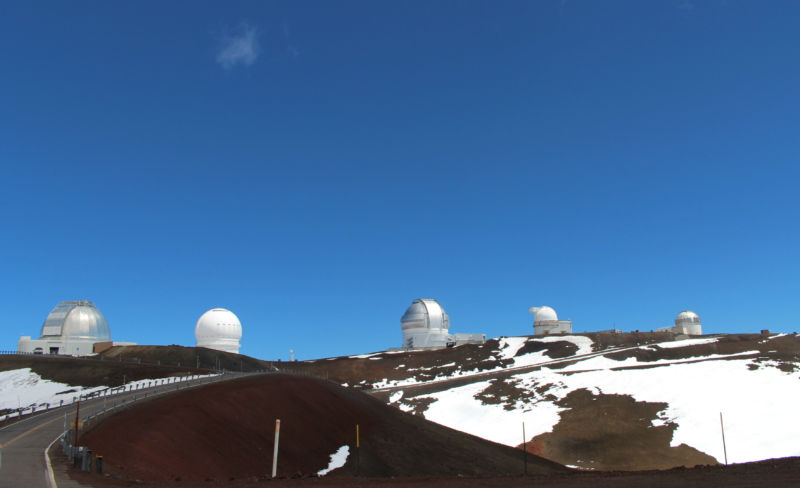
The Big Island of Hawaii has perhaps the best astronomical seeing conditions in the Northern Hemisphere, and the University of California system and Caltech have a $1.4 billion plan to build the world's largest telescope there. The Thirty Meter Telescope (TMT) would open up an unprecedented window into the early history of the Universe—and other unknown wonders.
But some native Hawaiians do not want further telescopes built on the sacred summit of Mauna Kea, which at nearly 14,000 feet is the highest point in the chain of Pacific Islands. They have put up fierce opposition to the telescope's construction alongside other instruments already on the summit and have scored some wins. For example, after the state's Board of Land and Natural Resources issued a building permit to the TMT institutions, the State Supreme Court invalidated it in 2015 because proper state procedures had not been followed.
Now, the telescope builders have won an important victory. On Wednesday, retired Judge Riki May Amano, who is overseeing the contested-case hearing, issued a ruling that recommended the Board of Land and Natural Resources issue a construction permit to the TMT institutions. The favorable ruling included 31 conditions, such as "ensuring that employees attend mandatory cultural and natural resources training," and a "substantial" but unspecified amount of sublease rent.
For their part, the TMT organizers said they were "pleased" with the judge's ruling. "We’re still reviewing all of the recommendations and look forward to the next steps in the process," the group said in a statement. "Mauna Kea remains the preferred choice for the location of TMT and we will continue to follow the process set forth by the state, as we always have."
To actually proceed with construction, however, the telescope needs both the building permit as well as a permit to use the conservation district land on top of the summit. The state land board will hear arguments about that permit over the coming months before issuing a ruling. And then there is the likelihood of appeals.
Time is running out for Hawaii. The telescope organizers have made clear their intentions that, unless they have clearance to proceed with construction by early 2018, they’ll move the instrument to an alternative site in the Canary Islands. The skies may not be as good, but the politics are better.
reader comments
209